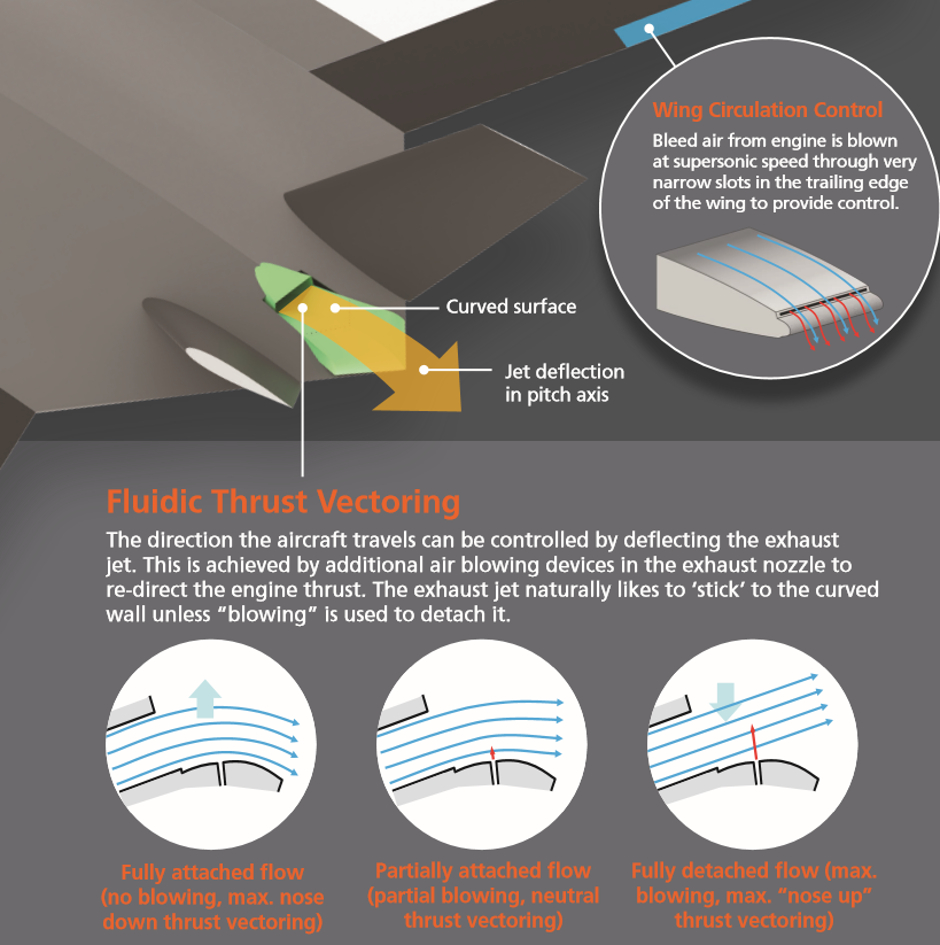MAGMA jet-powered UAV sets course for flapless flight
Efforts toward flapless flight have taken off with BAE Systems and Manchester University successfully completing initial flight trials of MAGMA, a jet powered UAV aiming to manoeuvre with an integrated blown-air system.
Seen as informing the design of future stealth aircraft, the new concept for aircraft control seeks to eliminate complex, mechanical moving parts that move flaps to control aircraft during flight.
According to BAE Systems, this could give greater control as well as reduce weight and maintenance costs, allowing for lighter, faster and more efficient military and civil aircraft in the future.
Wing circulation control and fluidic thrust vectoring are the key technologies to be trialled first using the jet-powered UAV. The former takes air from the aircraft engine and blows it supersonically through the trailing edge of the wing to provide control for the aircraft, whilst the latter uses blown air to deflect the exhaust, allowing for the direction of the aircraft to be changed.

Previous attempts at flight without elevators or ailerons have seen the defence giant and UK universities develop Flaviir and DEMON, the latter being a 90kg vehicle with a wingspan of 2.5m that undertook the first 'flapless' flight sanctioned by the CAA in September 2010.
Register now to continue reading
Thanks for visiting The Engineer. You’ve now reached your monthly limit of news stories. Register for free to unlock unlimited access to all of our news coverage, as well as premium content including opinion, in-depth features and special reports.
Benefits of registering
-
In-depth insights and coverage of key emerging trends
-
Unrestricted access to special reports throughout the year
-
Daily technology news delivered straight to your inbox










Water Sector Talent Exodus Could Cripple The Sector
Maybe if things are essential for the running of a country and we want to pay a fair price we should be running these utilities on a not for profit...